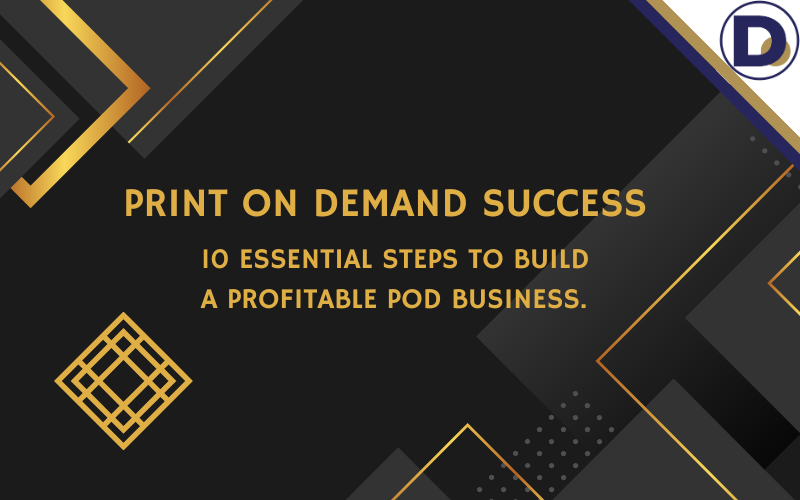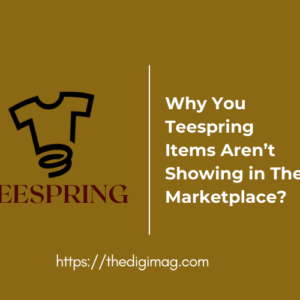Starting a Print on Demand (POD) business can be exciting, but without the right approach, beginners often make costly mistakes. If you’re thinking about launching a POD store, these ten essential tips will save you time, money, and frustration. Whether you’re brand new to the industry or looking to refine your strategy, this guide will set you up for long-term success.
1. Research and Identify Profitable Niches
One of the most common mistakes new Print on Demand sellers make is choosing overly broad niches. To stand out, focus on sub-niches—passionate communities with dedicated followings. Instead of targeting “fitness,” drill down to “yoga enthusiasts over 40” or “funny gym quotes.” Finding these profitable micro-markets reduces competition and increases your chances of making consistent sales.
How to Find Profitable Sub-Niches:
- Use keyword research tools like Google Trends and Etsy’s search bar.
- Check what’s trending on platforms like Redbubble, Amazon Merch, and TeePublic.
- Browse niche forums and Facebook groups to discover what your target audience loves.
2. Understand Your Target Audience
Knowing your niche isn’t enough—you need to understand your audience’s lifestyle, pain points, and preferences. Do they prefer humorous, inspirational, or minimalist designs? Are they drawn to vibrant or muted colors? Answering these questions helps create designs that genuinely resonate with them.
Pro Tip:
Look at the top-selling designs in your niche and read customer reviews to identify what people love and what they wish was different.
3. Choose the Right Print on Demand Platforms
Not all POD platforms operate the same way. Some require you to drive traffic, while others handle it for you.
Two Main Types of POD Platforms:
- Passive POD Platforms (Amazon Merch on Demand, TeePublic, Redbubble) provide organic traffic and manage everything from printing to customer service.
- Active POD Platforms (Printful, Printify, Etsy) require you to drive your own traffic but offer greater branding control and pricing flexibility.
For beginners, uploading designs to multiple passive platforms increases visibility and maximizes revenue potential.
4. Create High-Quality, Unique Designs
Your designs determine your success. Invest in professional-looking artwork that stands out. Tools like Canva, Affinity Designer, and Photoshop are great for beginners, while Placeit provides customizable, commercially usable templates.
Quick Design Tips:
- Ensure designs are at least 300 DPI (high resolution) for crisp printing.
- Use transparent backgrounds (PNG format) for T-shirts and mugs.
- Stick to CMYK color mode to ensure colors print accurately.
5. Set Up Your Store the Right Way
When creating your POD store, choose a name that reflects your niche, but avoid trademarked terms. Check trademarks using the USPTO database or similar services.
A well-structured storefront improves trust and conversions. Ensure your store has:
- A professional logo and banner
- A clear “About” section explaining your brand
- Well-organized collections and categories
6. Optimize Product Listings for SEO
Search engine optimization (SEO) determines whether your products get found. Use relevant keywords in your titles, descriptions, and tags.
Example of an Optimized Title:
Instead of “Funny Gym Shirt”, use “Funny Workout Shirt for Fitness Lovers | Gym Motivation Tee”
SEO Tips:
- Use long-tail keywords (specific phrases like “cute cat lover hoodie” instead of just “cat hoodie”).
- Include synonyms and related keywords in descriptions.
- Write compelling product descriptions that highlight benefits and emotions.
7. Develop a Marketing Strategy
Even if you’re using passive platforms, marketing can boost sales. Leverage social media, Pinterest, and influencer collaborations to drive traffic.
Simple Marketing Strategies:
- Create Instagram and TikTok videos showcasing your designs.
- Pin your products on Pinterest with optimized descriptions.
- Offer limited-time discounts to encourage urgency.
8. Price Your Products Strategically
Pricing can make or break your success. Find the right balance between affordability and profitability.
Pricing Tips:
- Research competitors and price within a similar range.
- Factor in platform fees and production costs.
- Test different price points to find what converts best.
9. Order Samples to Ensure Quality
Before promoting your products, order samples to inspect print quality, fabric durability, and packaging. If you plan to charge premium prices, make sure your products justify the cost.
10. Prepare for Customer Service
If you’re using platforms like Etsy, be ready to handle inquiries, complaints, and refund requests professionally. Clear store policies help set expectations and minimize disputes.
Concluding Remarks:
Starting a Print on Demand business requires strategy and persistence. By choosing the right niche, optimizing your store, and focusing on high-quality designs, you can build a profitable brand. Avoid common mistakes by implementing these ten steps, and you’ll be well on your way to POD success!



